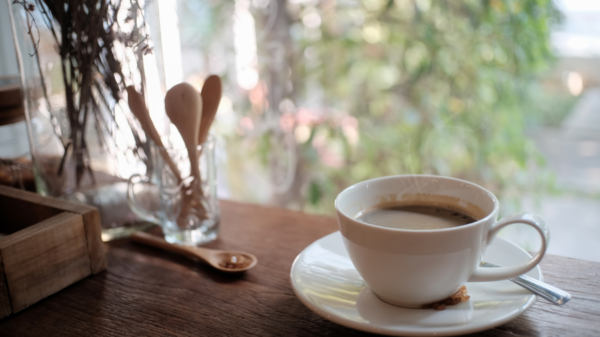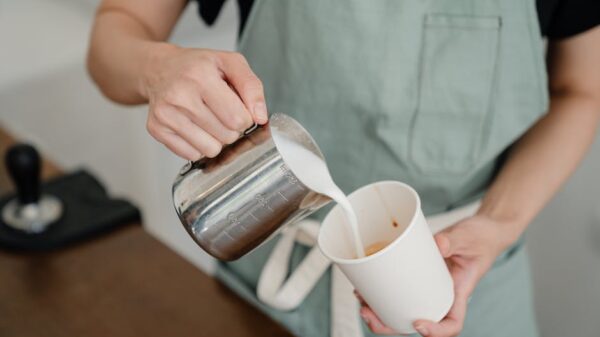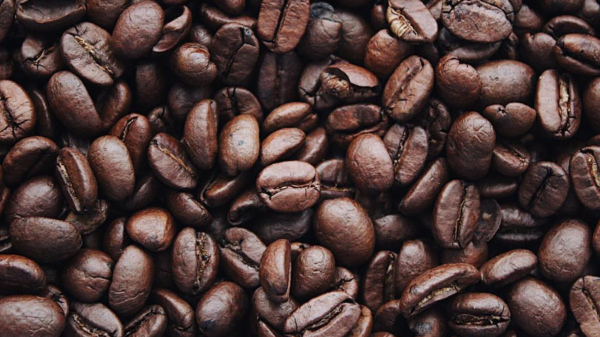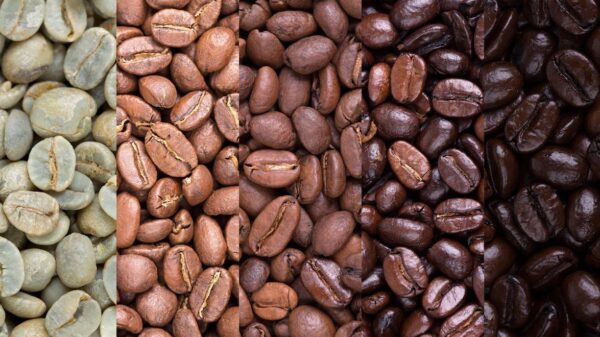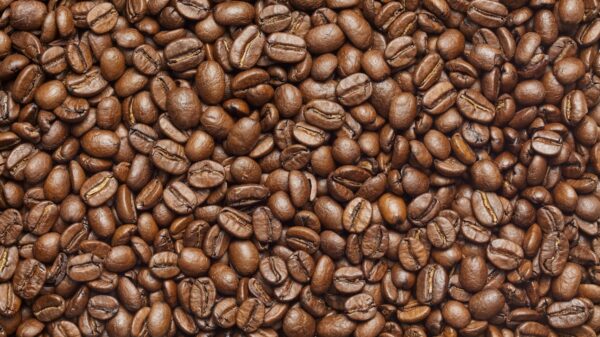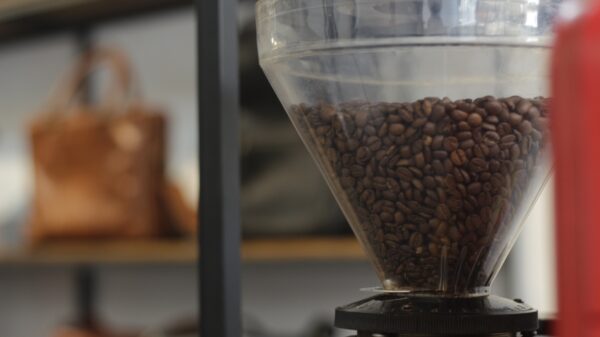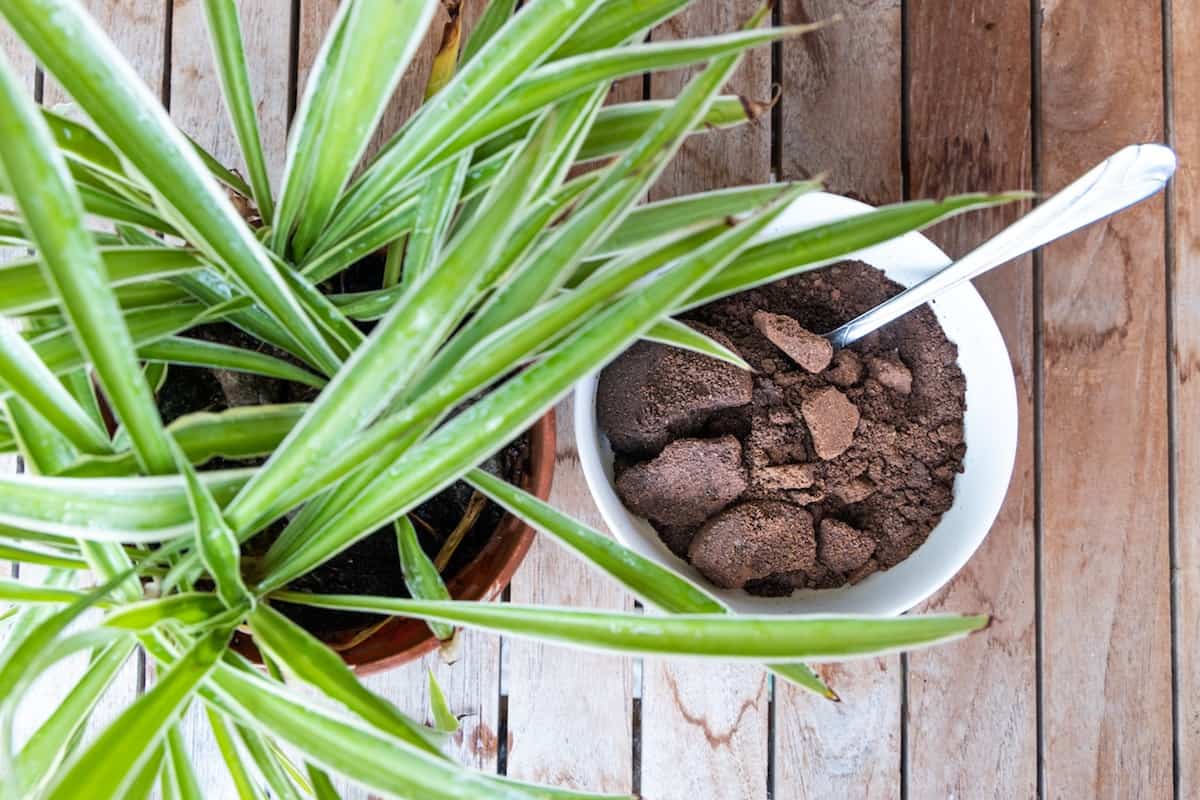Plants That Like Used Coffee Grounds
Used coffee grounds can be a great way to add some extra nutrients to your plants. However, not every type of plant will appreciate what coffee grounds have to offer, so it’s important to research which plants like this type of fertilizer and which ones don’t. So, which plants like used coffee grounds?
Roses, carrots, radishes, azaleas, rhododendrons, camellias, hydrangeas, and evergreens like having used coffee grounds added to their soil. The nitrogen, calcium, and other minerals in the coffee grounds help these plants thrive.
There are some limitations to be aware of when applying used coffee grounds to your garden, however, as the idiom “too much of a good thing” applies to plants as well as humans.
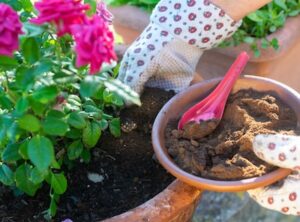
Plants to Fertilize With Used Coffee Grounds
Adding used coffee grounds to the soil of your garden can be an economical and effective way to give your plants some good nutrients. However, since coffee is so acidic and full of nitrogen, you should only give them to plants that need a lot of nitrogen. These include:
1. Roses
Coffee grounds help to make roses more vibrant and full of color. Mix used coffee grounds into your rose beds for richer soil that will provide plenty of nutrients for your blooms. Just be careful not to place the coffee grounds too close to the plant, as the high concentration of nitrogen in the coffee can burn the plant.
2. Carrots and Radishes
Coffee grounds can give carrots and radishes an extra boost of calcium, which is important for healthy growth. Add used coffee grounds to your soil when planting these root vegetables to give them the nutrients they need to thrive.
3. Azaleas and Rhododendrons
These types of flowering shrubs love coffee grounds as well because they have an acidity level that helps stimulate healthy growth and vibrant blooms during their flowering season.
4. Camellias
Used coffee grounds are great for camellias as they help to keep their soil moist and acidic, which is essential for healthy growth and blooms.
5. Hydrangeas
Coffee grounds can be added around the base of hydrangea shrubs to make sure the soil stays slightly acidic. This will encourage larger and longer-lasting blooms that look vibrant and beautiful in any garden. In addition, hydrangeas that are growing in acidic soil usually produce flowers in a beautiful shade of blue.
6. Evergreens
Coffee grounds are great for evergreen shrubs because they can add nitrogen to the soil while improving its texture. This will help keep your evergreens lush and green, even during cold winter months.
7. Pothos
Coffee grounds can be added to the soil of this popular houseplant to help it grow and stay healthy. The acidity in the coffee grounds will help keep its soil at the perfect pH level for optimal growth.
By understanding which plants like the nutrients provided by used coffee grounds, you can ensure that you are using this natural fertilizer most effectively. Be sure to do your research and follow the specific guidelines for each plant before adding coffee grounds to your garden to help you give your plants the nutrients they need without accidentally overwhelming and damaging them.
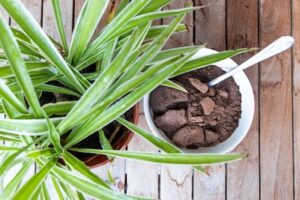
The Benefits of Using Coffee Grounds as Fertilizer
Coffee grounds provide several benefits to plants, both nutritional and environmental.
Nutritional Benefits
Coffee grounds contain a variety of minerals, including calcium, magnesium, nitrogen, and phosphorus. These are beneficial for plant growth and health. In addition, the acidity of coffee grounds helps to keep the soil at an optimal pH level for most plants.
Environmental Benefits
Coffee grounds can absorb heavy metals in soil, helping your plants to stay safe from toxic substances. They can also attract worms, which are beneficial for soil aeration and drainage, as well as deter pests that can damage your plants.
Coffee grounds can be an effective and economical way to give your plants the nutrients they need for optimal growth and health. Be sure to research which types of plants will benefit most from this natural fertilizer, as well as any guidelines you should follow when using it. With the right information and care, you can use used coffee grounds to help your garden thrive.
Plants That You Shouldn’t Use Coffee Grounds to Fertilize
Though coffee grounds are an effective natural fertilizer for many plants, some should not be fertilized with them. These include:
1. Tomatoes
Coffee grounds can make the soil too acidic for tomatoes, resulting in stunted growth and yellowing of leaves. If you wish to use coffee grounds for your tomatoes, try mixing them with other organic matter such as compost or aged manure.
2. Rosemary
This herb does not respond well to coffee grounds because it prefers neutral or slightly alkaline soil. If you wish to fertilize rosemary, use an organic fertilizer with a pH close to 7.
3. Lavender
Coffee grounds can also make the soil too acidic for lavender, so it’s best to avoid using them. Instead, use aged manure or compost to nourish your lavender plants.
4. Geraniums
This type of plant prefers a neutral soil, so it’s best to avoid using coffee grounds as a fertilizer for geraniums. Stick with an organic fertilizer instead.
5. Asparagus
Asparagus does not do well in acidic soils, so it’s best to avoid using coffee grounds as a fertilizer for this plant.
6. Aloe
Coffee grounds can make the soil too acidic for aloe, which prefers more neutral conditions. Use a succulent-specific fertilizer for these plants.
These are just a few of the most common plants that don’t like coffee grounds in their soil, so be sure to do your research on the plants and their preferred soil pH before adding it to your garden. By understanding which plants are suited for coffee grounds and which ones should be avoided, you can ensure that your plants receive the nutrients they need without the risk of accidental damage.
How to Apply Coffee Grounds to Soil
Once you’ve determined which plants are suited for coffee grounds, it’s important to understand how to apply this natural fertilizer properly. You have two options for how to apply the coffee grounds to your plants: Adding them to your compost or sprinkling them directly onto the soil.
If you add the grounds to your compost, make sure you mix them in thoroughly so it’s evenly distributed throughout the pile. As your compost breaks down, the nutrients will be released into the soil and absorbed by your plants.
If you choose to sprinkle coffee grounds directly onto the soil, make sure you apply only a thin layer and spread them out evenly over a wide area. You can also gently mix the grounds into the topsoil to ensure they are distributed evenly.
It’s important to note that coffee grounds should not be used as a substitute for regular fertilization, as they can only provide limited nutrients. For optimal results, you should use coffee grounds in combination with other types of organic fertilizer suited for your specific plants.
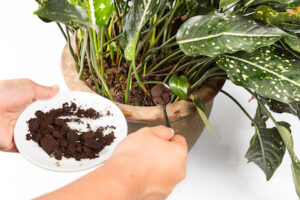
In Closing
To summarize, coffee grounds are a wonderful and natural resource that can help benefit a variety of different plants. When it comes to using them as fertilizer, be sure to monitor soil pH levels carefully to ensure the best results. Ultimately, adding composted coffee grounds has been proven to be beneficial for many plants over time. Plus, it’s an easy and cost-effective way of providing our green friends with some extra nutrition!
Related Questions
Can I put unused coffee grounds on my plants?
Yes, you can use unused coffee grounds on your plants. However, you should be aware that they will not provide the same nutrient benefits as used grounds. Unused grounds are more acidic and contain fewer beneficial microorganisms that help to break down organic matter and feed your plants. If you choose to do this, make sure you spread them out thinly and evenly. You should also avoid using too much, as this can make the soil too acidic for certain plants.
What other fertilizers are good for plants?
There are a variety of different fertilizers available for use in the garden. Compost, aged manure, and fish emulsion are all great options for providing your plants with the nutrients they need. Additionally, there are many commercial organic fertilizers on the market that can provide specific nutrients tailored to your plant’s needs.

